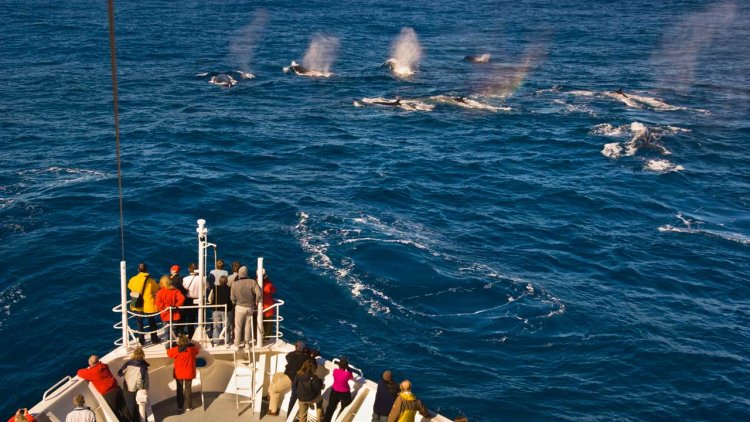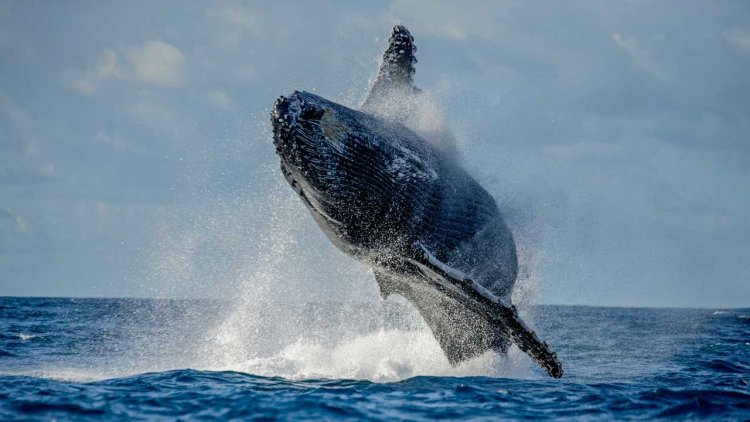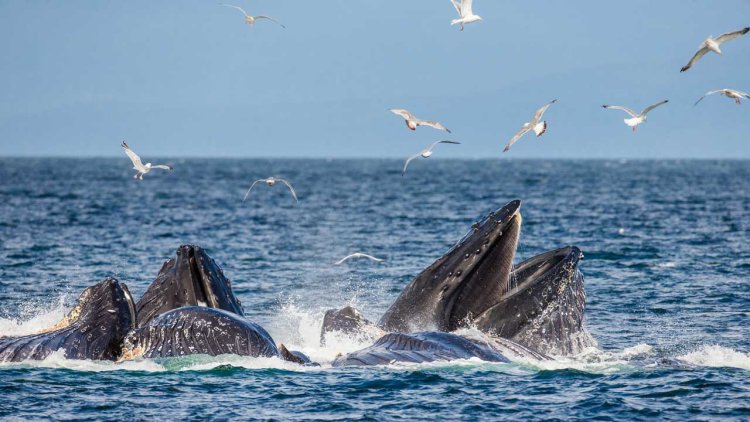Whale warning as clock ticks towards deep-sea mining
Seabed mining could soon begin in the deep ocean—but the potential impact on animals including whales is unknown, researchers have warned.

Commercial-scale deep seabed mining in international waters could be permitted for the first time later this year.
In a new paper, scientists from the University of Exeter and Greenpeace Research Laboratories say that deep seabed mining could be a "significant risk to ocean ecosystems", with "long lasting and irreversible" effects.
The study focuses on cetaceans (mammals such as whales, dolphins and porpoises) and says urgent research is needed to assess potential impacts.
Dr. Kirsten Thompson, of the University of Exeter, said:
"Like many animals, cetaceans are already facing multiple stressors including climate change. Very little research has examined the impact that deep-sea minerals extraction would have on cetaceans. Cetaceans are highly sensitive to sound, so noise from mining is a particular concern."
The sounds expected to be produced by mining operations, including from remotely operated vehicles on the seafloor, are likely to overlap with the frequencies at which cetaceans communicate, the researchers stress.

Dr. Thompson added:
"We searched for data on how much noise such mining would cause, but no published assessment is available. We know noise pollution in the ocean is already a problem for cetaceans and introducing another industry that is expected to operate 24/7 would inevitably add to existing anthropogenic noise were deep seabed mining to go ahead. Despite this lack of information, it appears industrial-scale mining could soon begin in one of the planet's few remaining undisturbed environments."
The Clarion-Clipperton Zone (CCZ) in the Pacific Ocean, which provides habitat for about 25 cetacean species, including dolphins and sperm whales, is of particular interest to mining companies aiming to exploit polymetallic nodules.
In addition, mining companies are also looking to target seabed mineral resources in areas around seamounts and deep sea hydrothermal vents.
Dr. Solène Derville, of Oregon State University, said:
"Seamounts are now known as important offshore habitats for some cetacean populations that forage or regroup around them but we still lack basic knowledge of these fragile ecosystems. In this context, it is very hard to assess the magnitude of the impacts of seamount seabed mining on the animals that live and feed around these structures."
No commercial-scale seabed mining has yet occurred outside the exclusive economic zones (EEZs) of coastal nations, although 31 exploration permits have been issued for areas beyond national jurisdiction by the International Seabed Authority, a United Nations body.

However, in June 2021, the Pacific island of Nauru triggered the so-called "two-year rule" and informed the International Seabed Authority (ISA) that it plans to mine the deep sea—meaning that mining could go ahead in June this year with whatever regulations the ISA has formulated by that time.
Nauru is working with a Canadian firm called The Metals Company, which has already begun testing mining equipment in Pacific waters.
Dr. Thompson said:
"Commercial-scale mining is expected to operate 24-hours a day, with multiple operations extracting minerals across an area of the seabed. We don't know how this will affect cetaceans or the vast range of other marine species. What we do know is that it will be difficult to stop seabed mining once it has started. Given the imminent threat that the two-year rule presents to ocean conservation, we suggest there is no time to waste."
The paper, published in the journal Frontiers in Marine Science, is titled: Urgent assessment needed to evaluate potential impacts on cetaceans from deep seabed mining.

























































































































































